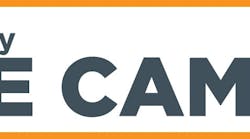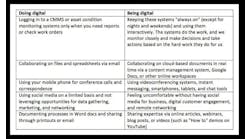By Keith Larson, editor at large
It’s been a rough stretch. As I write this, it’s Friday the 13th , March 2020, and the escalating COVID-19 crisis has just been declared a national emergency in the U.S., as countries around the world take unprecedented measures to stem the spread of the virus. Social distancing is the meme de jour as physical events of all sizes—including our own Smart Industry Base Camp conference, which was to be held later this month—have been cancelled or postponed, business travel curtailed and employees encouraged to work from home where possible.
Smart Industry's Keith Larson
And while some sectors of the economy such as tech are already well down the path of telecommuting as a primary work practice, for many more conservative organizations such as in the industrial sector, the current crisis represents a forced experiment at enormous scale that may catalyze a permanent shift. Cisco Webex, for example, reports that free sign-ups for its video-conference service have already increased by an order of magnitude in affected countries. But it’s not just general-purpose collaboration tools that are seeing an uptick.
Brad Budde, vice president, digital, for Emerson Automation Solutions, believes that this historic event will create a step-change shift toward digital in the way knowledge workers do their work. “The technology is available,” Budde says, “and for many use cases the growth constraint has been changing human behaviors.” Emerson’s business-to-business customers already are moving to digital in their interactions, Budde says, with digital inquiries up 34% since last year. Further, the average user of the company’s recently introduced MyEmerson platform, which is designed to streamline specification and procurement processes, already engages with the tool five times a month.
“There’s an underlying behavioral shift,” Budde says. “Now, we’re asking ourselves, how do we use these digital tools, in conjunction with our support and services channel, to ensure business continuity for our customers? We’re going to start turning up the volume so that people know the tools are there and they can take advantage of them right now.”
Wake-up call
The COVID-19 crisis is also a wake-up call for potential users of remote access tools such as Scope AR’s WorkLink augmented reality platform. One of the company’s customers, a major Chinese food and beverage maker with a key plant in Vietnam, is using WorkLink’s remote assistance functionality to maintain vital operations and keep the factory running during this volatile time.
“There’s only so much knowledge to go around,” says David Nedohin, Scope AR cofounder and chief customer officer. And whether it’s due to the longer-term global shortage of engineering talent, pandemic-induced travel restrictions, or the next natural disaster or cyber-attack, “company leaders are starting to realize that the ability to scale knowledge without someone getting on a plane is a need to have, not a nice to have,” Nedohin says.
“When you’re forced into a situation where you need to do things differently, you recognize there probably are better ways of getting things done, of supporting your workforce,” Nedohin continues. ”Change is often difficult, but when you’re forced to approach a problem differently, it’s also an amazing opportunity. Innovation comes from times of crisis.”
Clearly, the use of online collaboration tools, remote meetings, digital workflows and remote monitoring tools was already on the rise before COVID-19. In six months, we’ll know if the rate of adoption has accelerated further.




